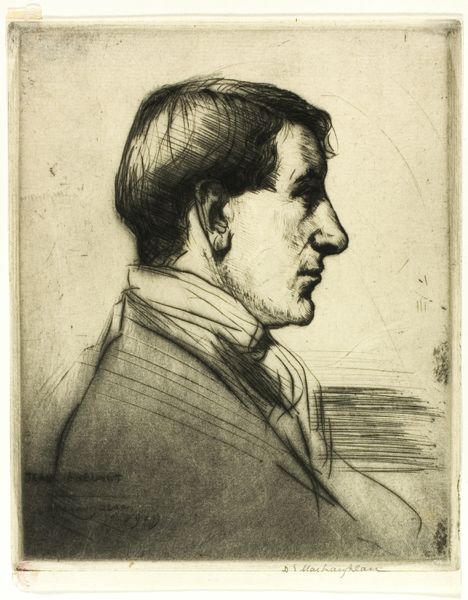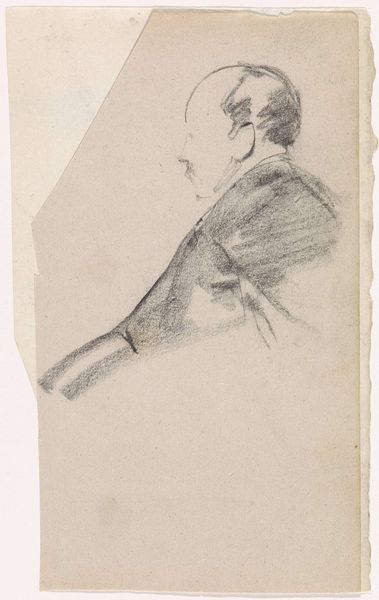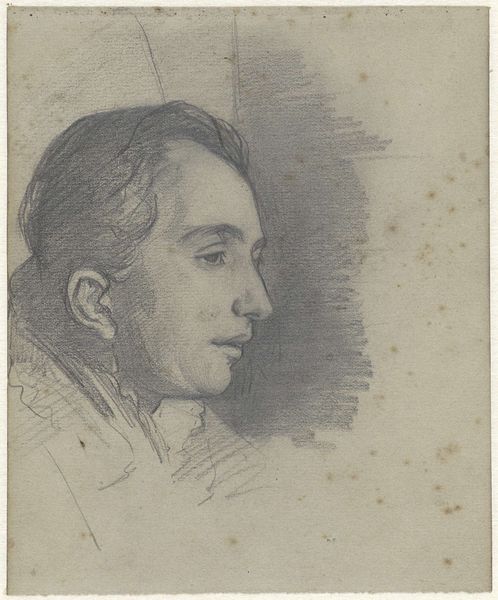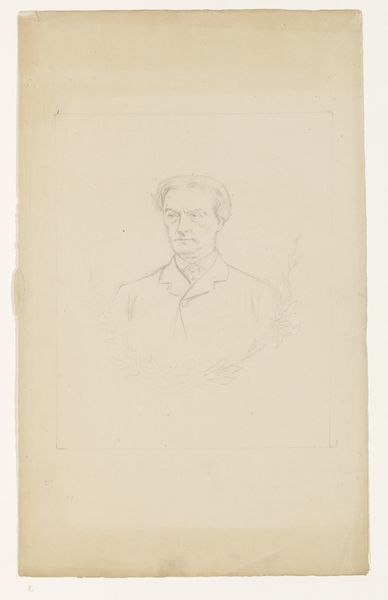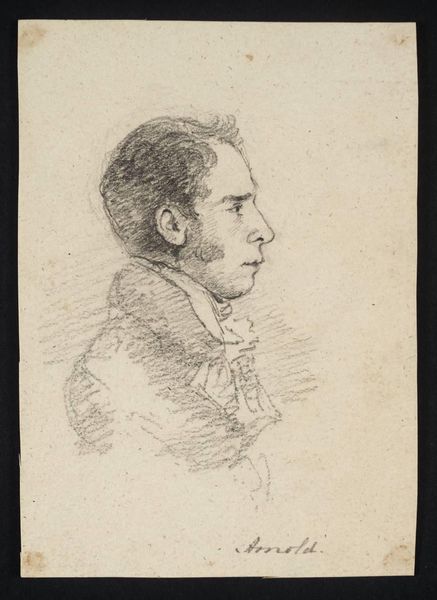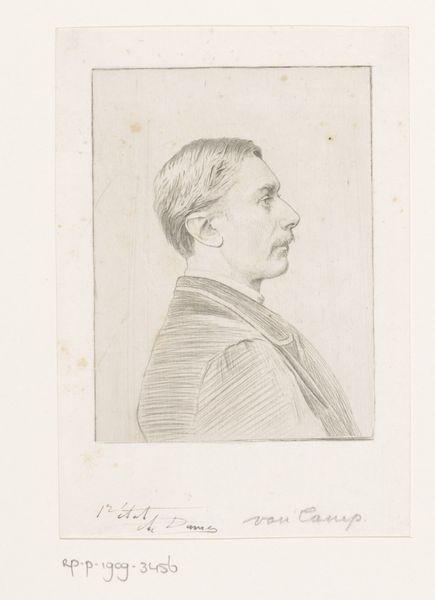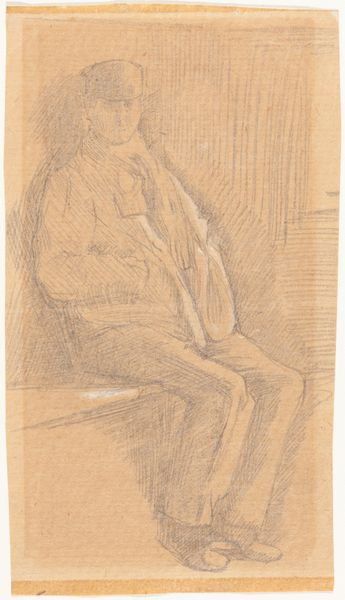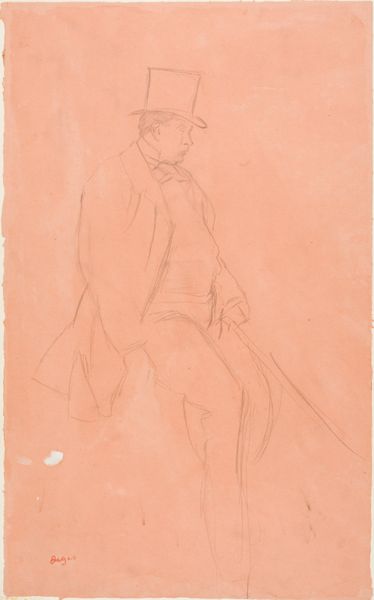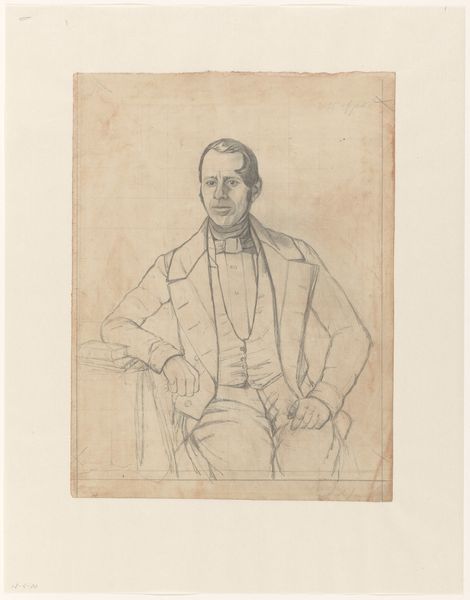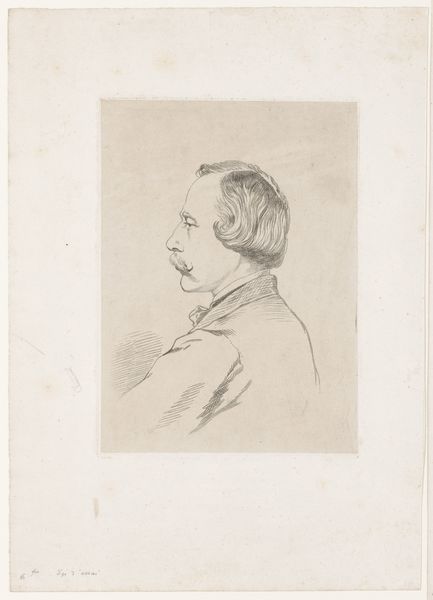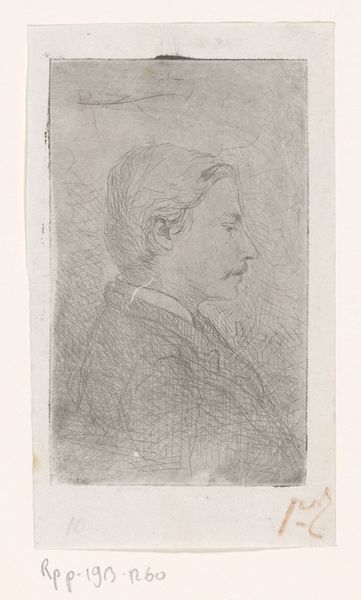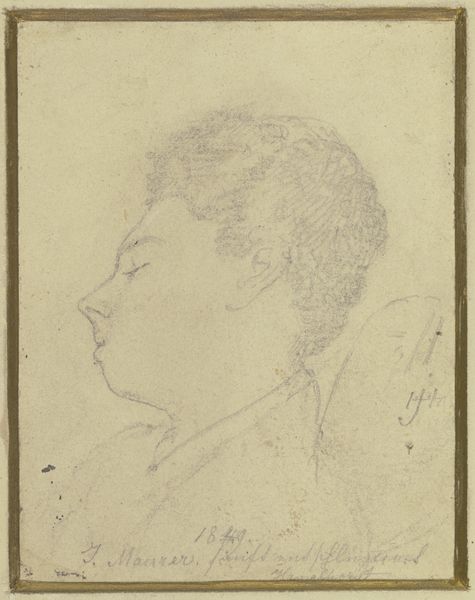
Dimensions: 353 mm (height) x 287 mm (width) (bladmaal)
Curator: Look at this sensitive pencil drawing; it is a portrait of Ernst Goldschmidt by Karl Isakson, dating from around 1905 to 1908. Editor: It feels incredibly intimate, almost like a stolen glance. The stark simplicity of the lines against the aged paper gives it a real sense of immediacy. Curator: Exactly. The portrait exists within a context of early 20th-century Danish artistic circles, marked by a turn toward depicting psychological interiority within portraiture. Goldschmidt, presumably someone known to Isakson, is not presented through grandiosity, but with quiet contemplation. There is a move away from societal expectation toward individual vulnerability and humanity. Editor: You're right; the focus on capturing a momentary likeness—the subject seemingly caught unawares, the economical lines forming shapes, mass, and contour, yet appearing unfinished, contribute to its striking mood and honesty. See how Isakson suggests Goldschmidt's inner life by using sparse lines—shadow and tone. The texture of the pencil lends character and even softens Goldschmidt's features. Curator: Indeed, the visible pencil strokes don't just render his form but evoke feeling—there’s an almost tactile quality to the marks. I see hints of Impressionism there. The unfinished state of the drawing brings out the fragility of identity itself. Here’s a man both present and elusive, his social role as banker diminished in a few strokes. We’re left with the personal. Editor: That’s insightful; his profile—his averted gaze—creates an elegant but stark arrangement on the paper. The lack of flourish encourages a different engagement; it’s about form rather than persona. There’s real semiotic complexity. Curator: Considering this artwork prompts one to reflect on what society expects of us—and what art can reveal beneath the surface. What this work says to me is, through all social performance, we are all sketches—works in progress searching for greater definition and wholeness. Editor: Yes, it allows a raw vision and highlights the importance of a distilled visual language. It serves to say a lot with just a little—something vital that transcends era and style.
Comments
No comments
Be the first to comment and join the conversation on the ultimate creative platform.
